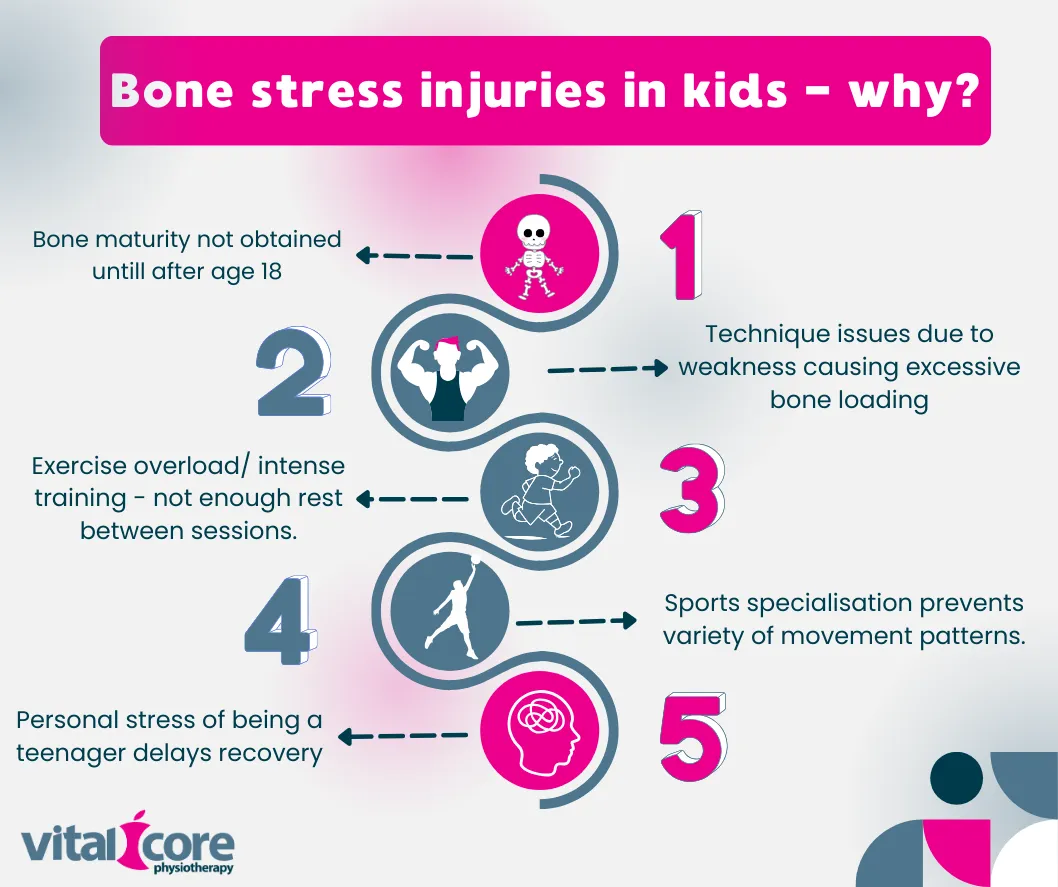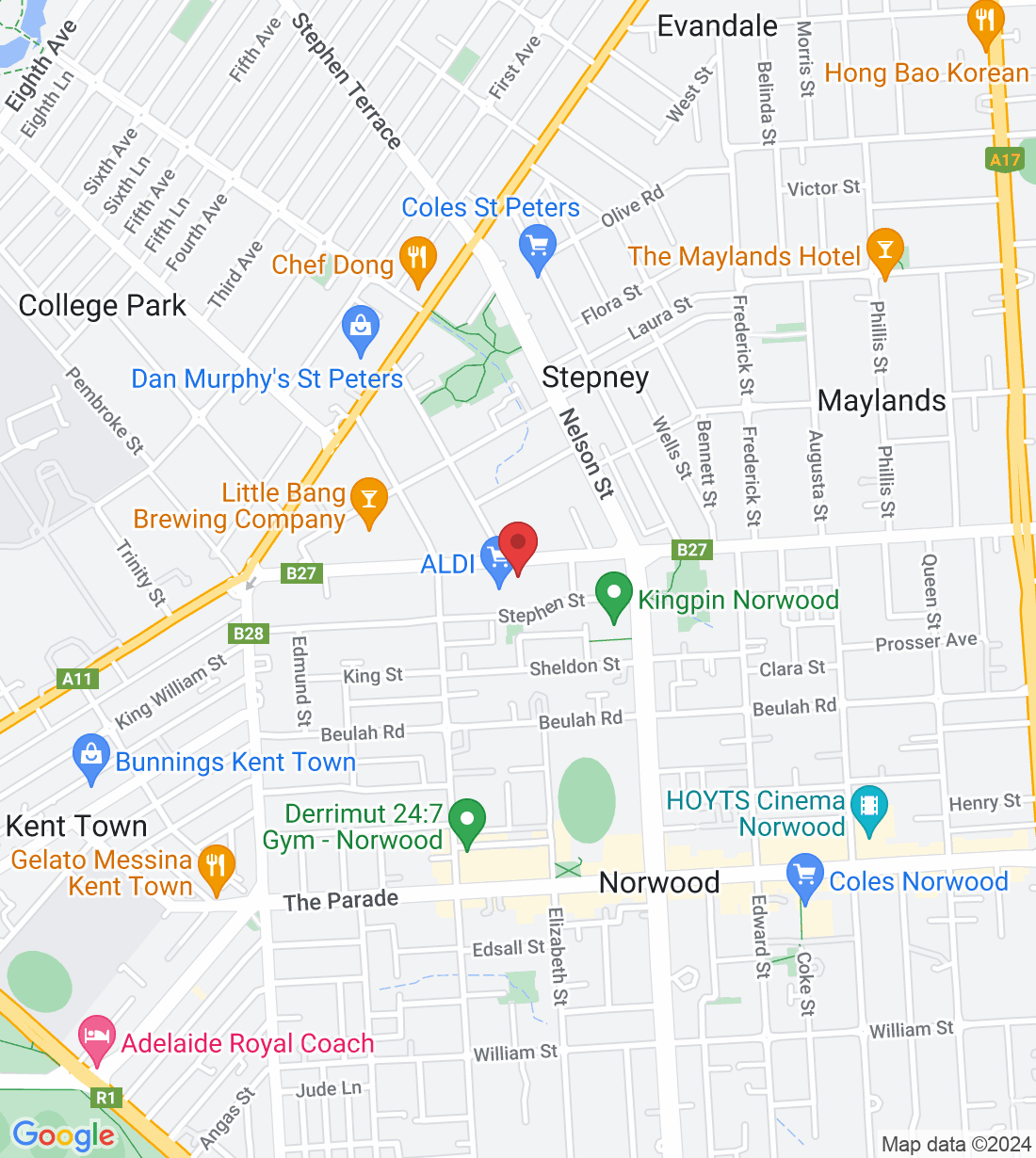
Bone Stress Injuries in Kids
Bone stress injuries are more common in children then tendon injuries
Does this surprise you?
Children have an immature skeletal system.
Their bones aren't fully formed until their late teens or in the case of some boys not until their early to mid twenties! We all know this right? Boys grow late. We all know someone who suddenly shot up at age 19. Once the bones finish growing they then need to harden up. This also takes time.
Why does this matter?
When too much force is placed through an immature bone too frequently, it does not cope well. The bones are the weakest part of these otherwise incredible young strong bodies!
So a young fit, active, muscularly developed teenage boy playing and training hard for footy or basketball as well as school athletics (etc.) can put an awfully large amount of force through the bones of their low back and pelvis.
If there is not enough time between training sessions for the body to recover and the bones to adapt, or the child hasn't been eating enough or has been unwell or too stressed to rest properly, injury can occur. For these young fit and strong kids it is more often a bone that becomes injured. Kids being kids often don't even tell their parent or coach until it is bad enough that they aren't able to perform as well as they would like.
Bone stress injuries (BSI) is an umbrella diagnosis for a spectrum of bony injuries. It can be quite a mild bone stress which is simply some irritation on the bone - feels like a bruise when you touch it. However it can progress all the way to a true fracture/ break of the bone with constant and debilitating pain.
So, bony pain in a child regardless of how mild, is not to be ignored. Left unmanaged it is quite likely going to progress, sorry. On the bright side though, caught early, bone stress injuries can recover quickly.
Common Bone Stress Injuries in Kids
Low Back/low lumbar spine: This area of the back takes all the force when you land, and twist. It is a common site for BSI in sports involving jumping and/or extending the back, such as gymnastics, dancing, football rucking, or cricket fast bowlers.
Pelvis: These are often at the front of the pelvis where the powerfull hip and thigh muscles attach. Football midfielders, sprinters, hurdlers, high jumpers, and basketball guards tend to suffer from this type of BSI because of how their powerful quadriceps pull on the pelvic bones.
Shin: The classic shin splints. The correct term is 'medial tibial stress syndrome', shin splints involve pain along the inner edge of the shin bone (tibia) which takes the stress when running. It is more common in long distance runners but can occur in anyone who runs and recently increases their training frequency and intensity.
Feet: A bit like the shin, the foot BSI are really common in anyone who suddenly increases their training loads. They are also really common in those who spend a lot of time on their toes such as dancers, callisthenics or sports aerobics.
Management
Bone pain is not to be ignored. It needs to be assessed ASAP and then the appropriate management program put in place. Some bony areas recovery easier and quicker than others.
The key features of management are;
Assessment of the exact type of bone stress injury. Often that is just a physical assessment by an experienced physio (like us at Vital Core physio), but may include referral to the GP for MRI or CT. This tends to be done when we need clarity of the exact type of BSI and its severity to determine the treatment plan.
Education: Helping the child (and parent) understand why this injury has occurred is really important to not only for a successful quick recovery but also prevention of reoccurrence. By teaching them what led to the BSI can help them accept the injury mentally and focus on their rehab.
Load Management: Once a BSI has been identified, training loads MUST decrease down to a level where there is no pain at all. For some kids that will mean some complete time off sport and sometimes all exercise. For others it is simply decreasing the intensity or frequency of the trainings or even substituting to different types of training (e.g swimming rather than running). Often this is for a period of around 6 weeks - which is the time it takes for bones to start healing. Dependent on the injury load may be carefully reintroduced.
Ensuring there is plenty of true rest each week. That means time not exercising or loading the injured area. This rest time is when the bones are recovering and adapting.
Balanced Nutrition: Kids need enough calories to support growth and recovery. Ensure they get sufficient calcium and vitamin D for bone health, and a well-rounded diet to fuel their recovery. Whilst most parents of teenage athletes will say "they're eating me out of house and home" the truth is they need all of those calories from the good nutrition.
Strength and Flexibility: Vital Core physio's prescribe specific mobility and strengthening exercises to support the bones as they heal as well as improve movement patterns which may have been faulty in the first place which lead to the problem.
Manual therapy: Hands on treatment such as massage or supported mobilisation can help with the pain as the bones heal as well as prevent adjacent areas from becoming tight or restricted.
Conclusion
Bone stress injuries can be a tough challenge for young athletes, but with thorough assessment and effective management with your trusted Vital Core physio, your child can recover and return to their activities stronger than before. Managing exercise load, ensuring balanced nutrition, and leveraging physiotherapy’s expertise are key to maintaining strong, healthy bones.
Ask a question of Vital Core Physiotherapy
Fill in the form to request a Call From Our Team
One of our team will call you for FREE and answer any questions or concerns you may have about your condition
© 2023 Vital Core Physiotherapy





